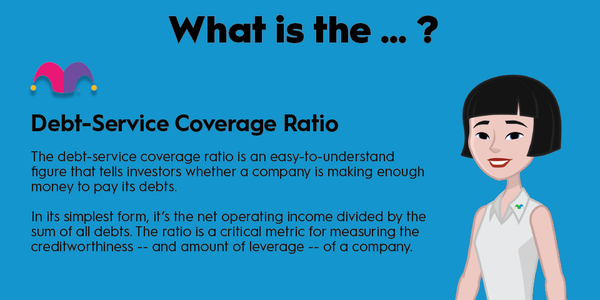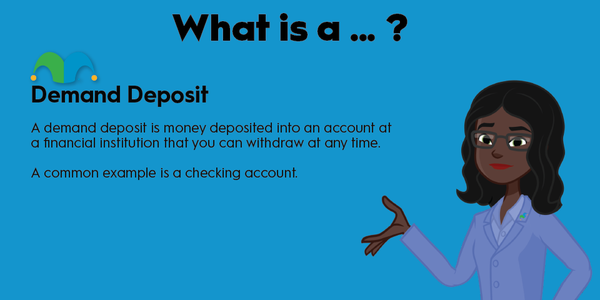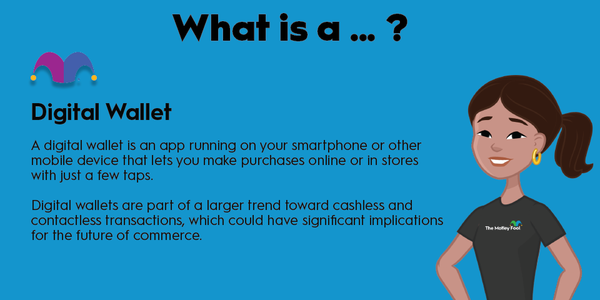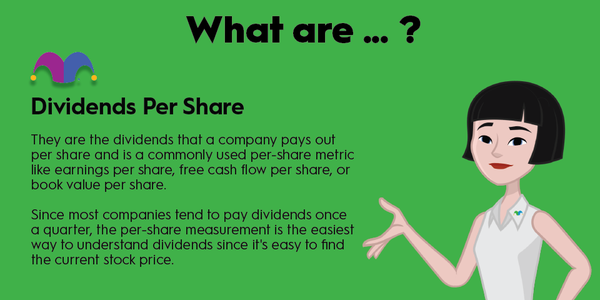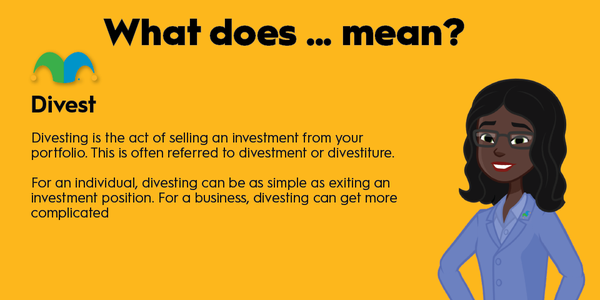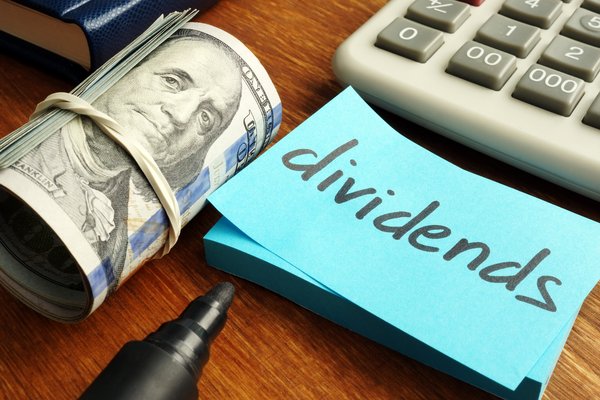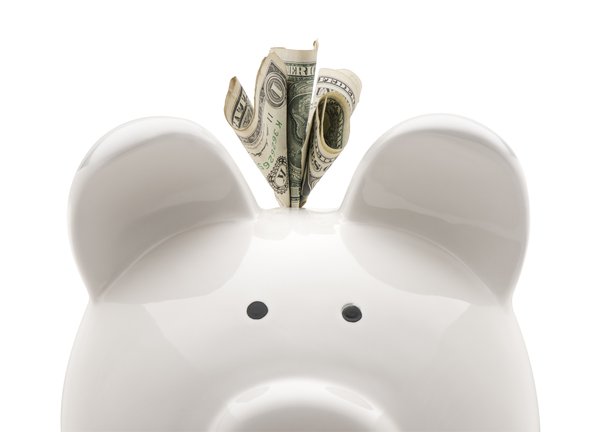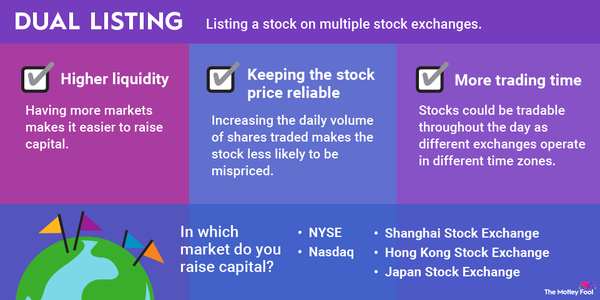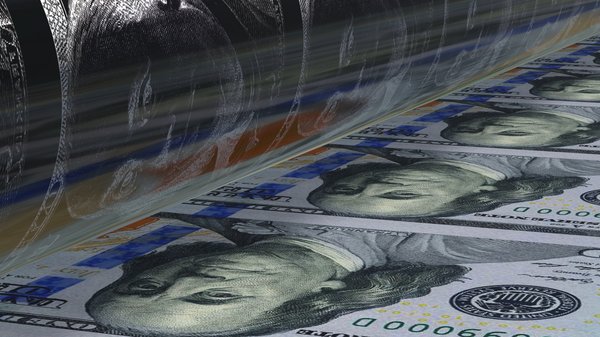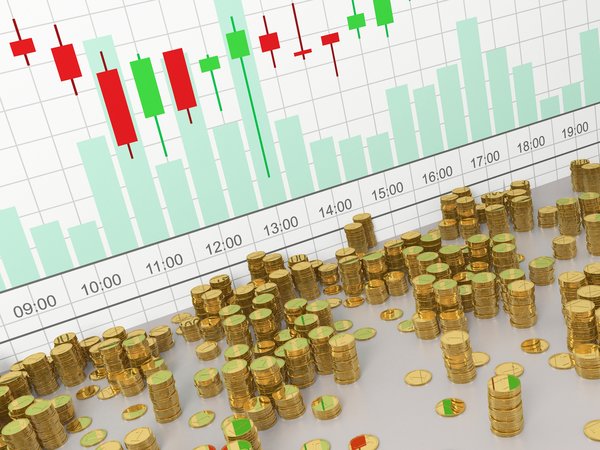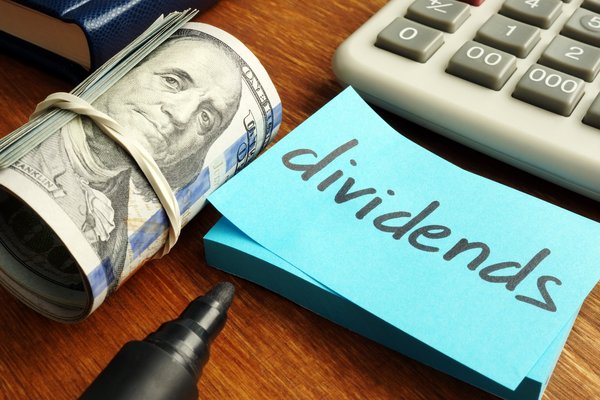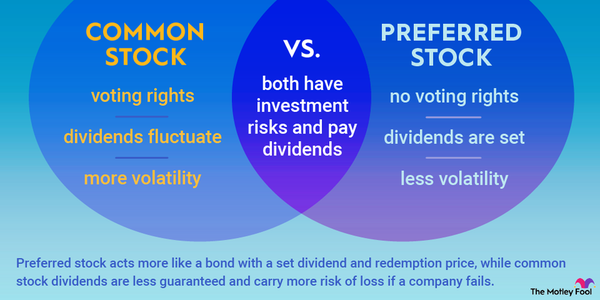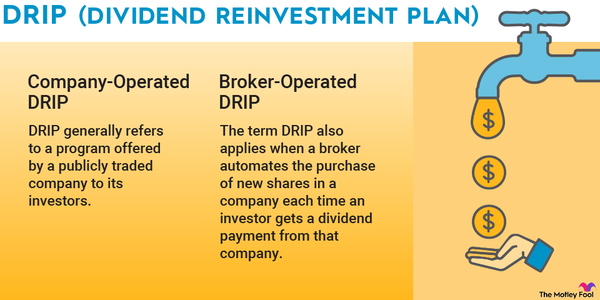The dividend discount model, or DDM, is a method used to value a stock based on the idea that it is worth the sum of all of its future dividends. Using the stock's price, the company's cost of capital, and the value of next year's dividend, investors can determine a stock's value based on the net present value of expected future dividends.
What exactly does all of this mean? In short, if you're buying dividend stocks, the dividend discount model can be a useful tool to determine exactly how much of the stock's price is supported by future dividends. But it's not perfect because it makes a lot of assumptions that may or may not prove true.
The dividend discount model
There are several dividend discount models to use, but by far the most common is the Gordon Growth Model, which uses next year's estimated dividend (D), the cost of equity capital (r), and the estimated future dividend growth rate (g).
The formula for the Gordon Growth Model is as follows:
Price = D ÷ (r - g)
So what exactly does the result mean? The price you get at the end is the stock's intrinsic value. That means, regardless of what the market is currently saying about the stock, this price is what it would actually take to buy the whole company in one shot.
While stock prices can fluctuate wildly for a variety of reasons, many of which end up being nonsense, the intrinsic value of the company depends on one thing: cash flow.
Some important notes:
- The dividend you use to calculate a price is the expected future payout and expected future dividend growth. This means the model is most useful with companies that have long and consistent dividend records, such as the Dividend Achievers.
- If you apply the formula to a company with a limited dividend history, or in an industry exposed to significant risks that could affect a company's ability to maintain its payout, the resulting price you derive from the formula may not prove reliable. This is because those dividends could stop growing or even stop being paid altogether. Remember GIGO (i.e., garbage in, garbage out). If your inputs are bad in any model, your output will be bad.
- The discount factor that you choose has just as much impact as the other factors. If you're consistently choosing low discount rates, you'll consistently have low returns on your investments.
Read on below for more information about how to determine a discount rate.

An example of the dividend discount model
Let's say that a certain stock is expected to make a $1 dividend payment next year. If its dividend has historically grown by 5% per year, it's fair to assume this same growth rate going forward. And we'll say that the cost of capital based on the expected rate of return is 10%. Using these input values, we can calculate the intrinsic value using the dividend discount model:
$1 dividend ÷ (10% cost of capital - 5% dividend growth rate) = $20
Therefore, according to the dividend discount model, I should pay about $20 for the stock based on my required rate of return. If it's trading for $25, an investor using this model may consider it an overvalued stock, while a price of $18 might make it look like a buying opportunity.
Other dividend discount model formulas
The Gordon Growth Model is handy if you're buying a stock to retain for the long term. Two other models can be used to evaluate a dividend stock you may be considering selling in the near term, or if you're looking to determine its value over a shorter period of time.
These two models are called the one-period dividend discount model and the multiperiod dividend discount model. They get significantly more complicated since you will need to estimate future stock prices as well as calculate expected future dividends paid for individual periods.
The Gordon Growth Model assumes the company will persist indefinitely and values every future dividend payment into infinity. This may seem aggressive, but expected dividends paid years from now are so heavily discounted that they're immaterial.
The one-period model values dividend payments during the holding period and then a sale price at the end of the holding. Both the dividends and the sale price are discounted back to the present, but there is no assumption of infinite business life.
The multiperiod model allows the analyst to assume a dividend growth rate that varies over the model's term. If you think the dividend will grow at 10% per year for the next five years, then 5% for the five years after that, followed by a sale, you can use the multi-period model to evaluate the stock.
Finally, each of these dividend valuation models is a close cousin to the discounted cash flow model, which is more widely used on Wall Street. It uses cash flow to value companies that have low or nonexistent dividends. The dividend discount models are considered more conservative because they use dividends that are actually paid to shareholders instead of all cash flow that the company earns.
Problems with the dividend discount model
Here are a few flaws with the dividend discount model that can make it less useful for some stocks:
- First, it's a constant-growth model. It assumes that the dividend will increase at a constant rate forever. Dividends, even those that increase every year, don't usually increase at a constant rate.
- Second, the equation is extremely sensitive to changes in the input values. Because the difference between the two rates in the denominator is usually quite small, changing the cost of equity or the dividend growth rate by even a fraction of a percentage point can make a big difference in the valuation of the stock.
- Finally, the model can't be used to value non-dividend stocks or growth stocks that pay relatively small dividends.
That's not to say the dividend discount model is useless. On the contrary, it can be helpful in determining if your estimates of value and expectations for companies with reliable dividend histories are reasonable. The main takeaway is that it's a method with a limited scope.
Understanding the time value of money
Each of these models exists to discount future dividends back to the present at a lower amount. When we do valuations, we don't simply add up all future dividends and leave it there. That's because of the time value of money: Money in the future is worth less than money in your pocket right now.
Money that you have right now can be used or invested for a return, and there is no risk to money you have right now. Forecasted dividends may or may not be paid in the future. The discount rate applies the time value of money concept to valuation and helps adjust the valuation for the risk that the dividends won't be paid for some reason.
The discount rate or discounting factor should vary based on the risk of the investment. For a Dividend Aristocrat that has increased its dividend for 25 consecutive years, you don't need to discount as much as you would for a growing company that may falter or decide to start investing more cash into the business (and paying less to shareholders).
How investors can use the dividend discount model
Like any valuation method used to determine the value of a stock, the best way to use a dividend discount model is as one piece of the puzzle. In other words, don't buy a stock just because the dividend discount model tells you that it's cheap. Conversely, don't avoid a stock just because the model makes it look expensive.
Stock analysis includes a wide variety of steps. You need to decide if the growth prospects are good, if the company has a competitive advantage, if the balance sheet is strong, and even if you would trust the management team with your money. A dividend-based valuation isn't the end-all, especially for companies that pay little or no dividends. It's just one more piece of the puzzle.



